Salon du Tapis d'Orient
The Salon du Tapis d'Orient is a moderated discussion group in the manner of the 19th century salon devoted
to oriental rugs and textiles and all aspects of their appreciation. Please include your full name and e-mail address
in your posting.
Rugs of Rare Beauty from Midwestern Collections
by Jerry Silverman
The American Midwest is a treasure trove of oriental rugs. These 64 small rugs, bags, and trappings from
several collections were exhibited at ACOR-6 in Indianapolis, in April 2002. They represent the boldness, imagination,
and - in some cases - courage of their owners. These are not “postage stamps” - textbook examples of rugs collected
because they match those in famous rug books. They are, instead, pieces that spoke to the idiosyncratic tastes
and informed eyes of their owners. Perhaps they will do so for you, as well.
The criteria for selection were simple: rarity and beauty. Or they seemed simple at the start.
As it turns out, rarity actually was simple to determine. Every novice rug collector learns that each rug is unique...a
handmade work of textile art. While that may be true, over time they learn that most rugs are of a type, closely
similar to others of its type. Once they have seen a great many rugs they begin to notice every now and then a
genuinely one-of-a-kind piece.
The creative impulse that led the weaver, probably a woman, to diverge from traditional, familial, generally conservative
designs and motifs merits our attention. There is no answer to why these are unlike the myriads of others made
at the same time in the same place. The weavers are long gone. And speculation is a thin gruel. Still it gives
one pause to consider the inventiveness and individuality expressed in these pieces.
Beauty, on the other hand, proved to be much more difficult to pin down. Not that it should be surprising. People
have been arguing about beauty from the dawn of recorded texts. Very, very briefly, the argument has divided into
two camps. The objective position asserts that beauty inheres in the object and that judgments concerning it may
have objective validity. The subjective position tends to identify the beautiful with that which pleases the observer.
Some philosophers have tried to mediate the two positions by showing that aesthetic judgment has a universal validity
despite its subjective nature.
This is the study of aesthetics. Entire libraries are filled with systems, philosophies, and musings on the subject.
Some of the wisest minds in history have grappled with it: Plato, Aristotle, Burke, Hume, Kant, Hegel, and many
modern philosophers. If a thorough-going understanding of aesthetics were required to select beautiful rugs for
an exhibit, there would be few exhibitions of beautiful rugs. (Some of you are going to leap all over the tautology
in the previous sentence. Feel free. That is what aestheticians have been doing for millenia.)
The standard for beauty for these pieces was would they make a compelling painting? Goethe recommended that “a
man should hear a little music, read a little poetry, and see a fine picture every day of his life....” Delacroix
said, “The most beautiful pictures I have seen are certain Persian carpets.” And Gauguin implored, “O painters
who are looking for a color technique, study rugs. You will find all the necessary knowledge there.”
These are pieces that can stand by themselves, withstand the brutal honesty of a single floodlight, and create
a lasting impression.
Respectfully,
Jerry Silverman
My thanks to John Howe who took the pictures below. It's not his fault that the room lights were turned off,
and each rug was illuminated with a single halogen floodlight. This shows up as unavoidable hot spots in the pictures
of the larger, darker rugs. Pictures with better illumination were taken and - in the near future - may
be available as a CD-ROM of this exhibition as well as the woven band and Baluch exhibits at ACOR6. Production
plans are still under discussion.
Because of the very large number of images, they are shown only as thumbnails in this Salon essay. Each
caption is linked to the appropriate image, which will open in a new window.
1) Qashqai

4’7” x 6’9”
From the collection of Michael Isberian
2) Perepedil

3’7” x 5’7”
From the collection of Jerry Raack
3) Armenian Caucasian

(One of two known examples, 18th c.)
5’8” x 9’2”
From the collection of Michael Isberian
4) Kazak Prayer

3’9” x 4’6”
From the collection of Michael Isberian
5) Turkish Kurd, Adayama Region

2’8” x 4’8”
From the collection of Jon M. Anderson
6) Cappadocian, Avanos

3’7” x 5’3”
From the collection of Jon M. Anderson
7) Kurdish, Jaf

3’10” x 7’1”
From the collection of Jean Valerius and Jerry Silverman
8) Kurdish, Jaf(?), Western Iran

5’4” x 6’5”
From the collection of Michael Wendorf
9) Kurdish, Eastern Kurdistan

4’10” x 5’6”
From the collection of Michael Wendorf
10) Kurdish, Northeastern Kurdistan or
Armenia

3’3” x 7’8”
From the collection of Michael Wendorf
11) Kurdish, Sauj Bulaugh, Northwestern
Iran

4’4” x 6’6”
From the collection of Michael Wendorf
12) Kurdish

5’ x 14’2”
From the collection of Jerry Raack
13) Borjalu Kazak

5’7” x 7’5”
From the collection of Larry Bergman
14) Shahsavan

3’1” x 9’4”
From the collection of Jerry Raack
15) Caucasian Akstafa

2’10” x 6’10”
From the collection of Michael Isberian
16) Caucasian

3’4” x 9’10”
From the collection of Michael Isberian
17) Veramin

3’4” x 8’11”
From the collection of James Douglas
18) Caucasian Akstafa Prayer

2’6” x 4’5”
From the collection of Larry Bergman
19) Kuba Prayer

2’10” x 5’8”
From the collection of Michael Isberian
20) Kurdish, Kagizman, Eastern Anatolia

4’3” x 7’4”
From the collection of Michael Wendorf
21) Fachralo Kazak Prayer

4’ x 4’5”
From the collection of Janet Welliver
22) Marasali Shirvan Prayer

3’11” x 4’4”
From the collection of Suzanne Kaufman
23) Konagend Kuba

Dated 1222 (1808 A.D.)
4’ x 5’
From the collection of Janet Welliver
24) Kurdish, Northwest Iran or Transcaucasia

3’3” x 5’
From the collection of Michael Wendorf
25) Caucasian

1’1” x 3’2”
From the collection of Michael Isberian
26) Turkish Yastik

1’8” x 3’10-1/2”
From the collection of Michael Isberian
27) Turkish Yastik

2’1” x 3’
From the collection of Michael Isberian
28) Turkish Yastik

1’6” x 3’1”
From the collection of Jon M. Anderson
29) Turkish Yastik, Konya(?)

1’9” x 2’5”
From the collection of Jon M. Anderson
30) Caucasian(?), Shirvan(?)

1’11” x 2’7”
From the collection of Jon M. Anderson
31) Turkish Yastik, Konya(?)

2’2” x 3’
From the collection of Jon M. Anderson
32) Central Anatolia (Modern, made with
old materials)
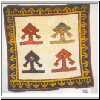
3’8” x 3’9”
From the collection of Jerry Raack
Owner’s Comments:
Ivory wool warps, primarily red wefts 2 to 4 shots; wefts pass over outermost warps and selvedge is wrapped
with red wool. Appears to be an antique, with an obvious repair in the upper center portion of ivory field, scattered
other repiling of ivory field and a corroded major border.
However, it may be modern: Wool pile is the same color on front and back and deep down in the knots. True
antiques generally have lighter colored wool at tips of knots than at base and back. Knots are very clean, with
no dirt visible anywhere. It is nearly impossible to get out all dirt on old pieces that have been used significantly.
Major border has 5 colors ranging from black to dark brown, and light aubergine to a light purple. All have "corroded"
to the exact same length even though they would have been made with different dyes and would have been expected
to corrode at different rates. Deeper red color in top half of upper left medallion has wool that is still tightly
twisted although the wool in the rest of the piece has no twist remaining. Mottled yellowish green in the medallion
in the upper right actually has a significant number of knots made with wool where the 2 strands are of completely
different colors (pure yellow and pure green). This is not possible for wools that are first twisted together and
then dyed. The green color in the kelim end at lower right is of a different color than the other greens in the
kelim ends. None of the greens in the kelim ends appear elsewhere in the the rug. Also, there is a significant
difference in the number of rows of weft that make up the various kelim colors. This would not occur if they were
woven completely across at initial creation.
Did someone go to a lot of work to produce an old looking rug from old materials, but in very recent times?
33) Rescht Tapestry

3’8” x 5’3”
From the collection of Jon M. Anderson
34) Senneh Prayer Kilim

4’ x 5’
From the collection of Janet Welliver
35) Senneh Horse Trapping

4’10” x 3’8”
From the collection of Janet Welliver
36) Caucasian Verneh

4’4” x 5’8”
From the collection of Michael Isberian
37) Afshar Bag Face
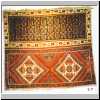
3’11” x 3’6”
From the collection of Joseph W. Fell
38) Tibetan
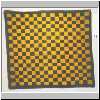
2’10” x 3’
From the collection of Jon M. Anderson
39) Shahsavan Bag Face
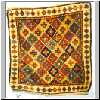
1’6” x 1’8”
From the collection of Joseph W. Fell
40) Kurdish Bag Face, Jaf, Western Iran
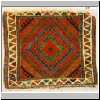
1’8” x 1’6”
From the collection of Michael Wendorf
41) Lenkoran Bag Face

2’ x 2’4”
From the collection of Joseph W. Fell
42) Shahsavan Bag Face

1’9” x 2’
From the collection of Jerry Raack
43) Shahsavan Bag Face

2’ x 2’3”
From the collection of Jerry Raack
44) Kyrgyz Bag Face
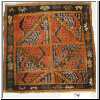
2’10” x 2’10”
From the collection of Joseph W. Fell
45) Caucasian Bag Face, Karabagh(?)
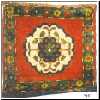
1’5” x 1’5”
From the collection of Jon M. Anderson
46) Chinese “Kang” Seat Cover
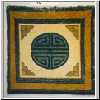
2’6” x 2’6”
From the collection of Jon M. Anderson
47) and 48) Tekke and Yomud Tent Band
Fragments

11” x 8’4” and 1’2” x 6’7”, respectively
From the collection of Janet Welliver
49) Beshir

3’11” x 7’2”
From the collection of Michael Isberian
50) Ersari Prayer

2’8” x 3’6”
From the collection of Michael Isberian
51) Beshir (Head and Shoulders) Prayer

3’2” x 6’
From the collection of Joseph W. Fell
52) Yomud Ensi

4’3” x 5’4”
From the collection of Joseph W. Fell
53) Yomud Ensi

3’11” x 4’10”
From the collection of Joseph W. Fell
54) Yomud Ensi

4’1” x 5’5”
From the collection of Michael Isberian
55) Yomud Ensi

4’1” x 5’9”
From the collection of Joseph Fell
56) Ersari Ensi

4’3” x 6’1”
From the collection of Erik Risman
57) Uzbek(?) Ensi

5’2” x 6’6”
From the collection of Erik Risman
58) Saryk Chuval

3’6” x 2’2”
From the collection of Dr. E. B. Long
59) Beshir Chuval

3’7” x 2’8”
From the collection of Dr. E. B. Long
60) Shirvan

5’11” x 9’6”
From the collection of Joseph W. Fell
61) Salor Torba Fragment

3’4” x 2’1”
From the collection of Janet Welliver
62) Ersari “Tulip”

3’2” x 4’1”
From the collection of Joseph W. Fell
63) Turkmen Eagle-Göl Group 1 Main
Carpet

(Older of two known examples, 18th c.)
5’5” x 7’3”
From the collection of Michael Isberian
64) Ersari Chuval

5’7” x 3’9”
From the collection of Jean Valerius and Jerry Silverman
Discussion























































